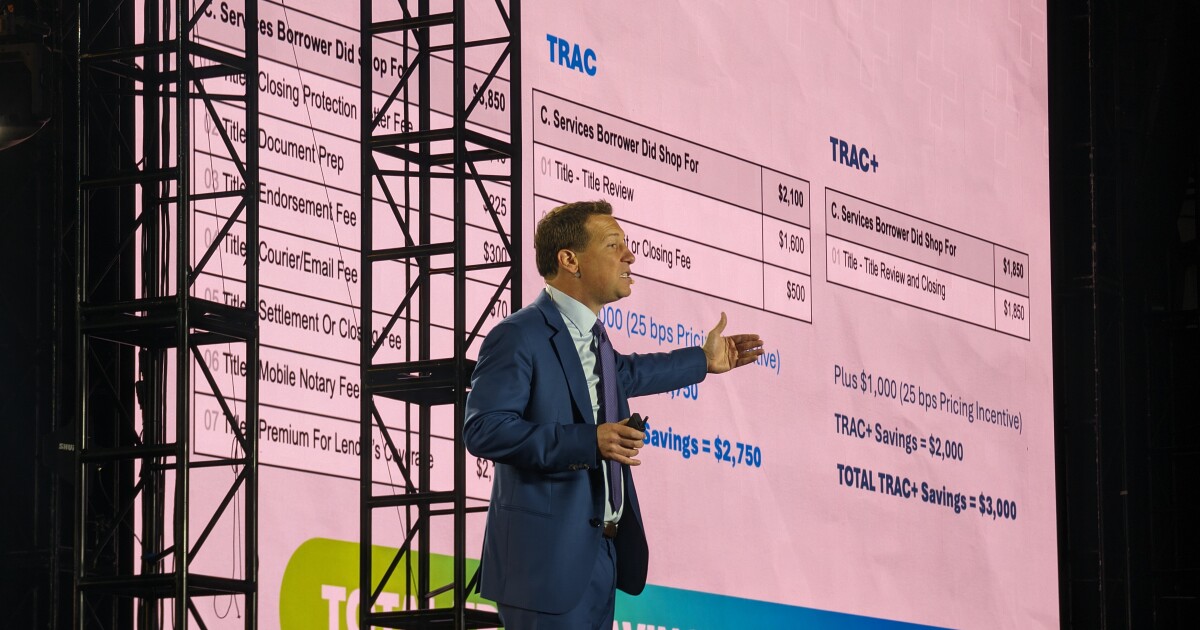
While lack of affordability still plagues the housing market, mortgage and housing leaders are looking for ways to address racial wealth disparities; special-purpose credit programs are often touted as a product that might bring results.
With a stream of SPCPs coming to market in 2023, lenders are recognizing their potential to open up homeownership to Black communities and other historically underserved groups, a goal that received renewed attention after racial-justice protests three years ago. But navigating the intricacies of the programs can be a complicated task, even among veterans in home finance.
Opportunities to create SPCPs – which can encompass a range of consumer loan products outside of mortgage as well – have existed since the mid-1970s following passage of the Equal Credit Opportunity Act. However, home lenders have rarely attempted to bring them to market, primarily due to concerns they would run afoul of fair housing laws. The landscape changed in late 2021, though, when regulators assured the industry that programs complied with the Fair Housing Act.
That development "paved the way for us to be able to bring it to the mortgage world without having the attorneys argue about it," said Gabe del Rio, president and CEO of Homeownership Council of America, a social enterprise nonprofit consultancy serving lenders seeking to provide equitable access to credit.
And lenders have taken notice, looking at SPCPs as one tool that could close wealth and homeownership gap disparities, particularly between white and Black Americans. In 2020, the rate of Black homeownership stood at 43.4%, lower than it was 10 years earlier, according to U.S. Census numbers. The white population, meanwhile, grew its rate to 72.1%.
"I think this is the industry coming together and, especially in the independent mortgage bank space, trying to solve a problem that we have, candidly, not been very successful at solving historically," said Justin Messer, president and CEO of Prosperity Home Mortgage.
While specific details can differ widely from lender to lender, SPCPs, by design, come with specific income and geographic eligibility requirements for both the borrower and property being purchased. The programs offer credits that can be used toward reducing down payments or other purchase costs and also include home buyer education.
Momentum behind them received a boost a year ago when Freddie Mac announced plans to introduce one of its own in 10 pilot cities. Since the launch, several leading nonbank lenders, including Rocket, CrossCountry and Pennymac, started offering the product called BorrowSmart Access.
As of July 2023, Freddie Mac had purchased more than 4,000 SPCP-originated loans, coming through either BorrowSmart Access or special-purpose credit programs lenders had developed themselves, according to the government-sponsored enterprise.
Del Rio, who is also a certified mortgage banker, estimates between 50 to 60 mortgage lenders have rolled out SPCPs in the last two years. His organization regularly assists both depository institutions as well as nonbanks in developing their own programs or partnering with the GSEs to offer their products.
But despite assurance from regulators, hesitation still remains among businesses he's worked with.
"When you've worked in credit, you have been taught you need to do that in a nondiscriminatory fashion. With SPCPs, there's some different rules that you need to bend through your mind and understand how and when and where do you verify, and how that is OK," del Rio said.
For instance, understanding the minutia that determine which borrowers or properties could be served with a special-purpose credit program requires knowledge and expertise that other loan products don't. The scrutiny needed can appear "overwhelming" to originators, according to Messer. In addition to SPCPs from government-sponsored enterprises Prosperity offers in Philadelphia, Chicago and Atlanta, it is also developing a proprietary version of its own.
Among factors that make administration of programs challenging are strict geographic boundaries established by rulemakers within some programs, which may make one home eligible, while a neighboring property across the street might not be.
"This concept that's really driven throughout these programs are MSAs [metropolitan statistical areas] and census tracts, which is not the lingo that Realtors use, nor that home shoppers use when they're thinking about houses," Messer said.
According to del Rio, many of the MSAs where SPCPs have appeared can be characterized as "affordable areas where there's stock that meets the price tag of the income levels of the people."
So there's a higher level of affordability in general in those MSAs. And there are high amounts of minority populations," he said.
But some within the housing industry point to flaws that exist with such a rigid geography-based focus.
"We are looking for potential homeowners who are best positioned to access homeownership as soon as possible. That is not necessarily going to coincide with the demographics that you have in a majority-minority census tract," said Bryan Green, vice president of policy advocacy at the National Association of Realtors, during a September roundtable discussion about special-purpose credit programs hosted by the four leading U.S. government housing regulators.
"Your most likely potential home buyers might, in fact, be located in the suburbs and not in that minority census tract. So that is one of the reasons why I think in homeownership policy, we have not been successful thus far. We haven't done the math correlating logically what we need to target," Green said.
The challenging geographic mandates also complicate marketing efforts that could drive their growth, said Michael Innis-Thompson, senior vice president and head of community lending and development and fair lending center of excellence at TD Bank. The financial institution first began offering an SPCP of its own design in early 2022 in 18 markets on the East Coast.
"To have straight, pure advertising, it's a little challenging," he said. "Most of the programs today are really geography based, so if you just had a widespread marketing effort, you'd have people calling that did not qualify," Innis-Thompson said. "It just results in a poor customer experience."
But such limitations have not stopped some lenders from coming up with SPCPs of their own to attract borrowers outside qualified government designated areas, including smaller cities or rural areas. While KeyBank introduced a special-purpose credit program in fall 2022 in specific metropolitan statistical areas — an endeavor that has resulted in almost 250 originations thus far — it recently launched two additional products available in all census tracts that meet eligibility requirements and are located within its nationwide footprint.
"Oftentimes, some of the smaller communities get overlooked, because these programs in different banks are very focused on some of the very large MSAs. But there are other underserved communities as well," said Dale Baker, KeyBank's president of home lending.
A broader strategy may eventually open the door to reaching Black and minority communities in pricier markets with SPCPs through bank-portfolio offerings, according to del Rio.
"I think that you'll see some more creative products where you have high affordability challenges, but you've got to remember that when you're working with populations of color, it's not just about affordability. We've got high-income people of color that are not homeowners, and they actually have quite a big capacity to own a home," he said, adding that income parameters of SPCPs could be widened in some markets.
High-earning minority borrowers without the generational wealth to support down payments would benefit from such products.
"What you see in the data is that people of color own at a substantially less rate in those higher-cost areas. Therefore, you've got to go up in income in order to find anyone who has a chance," del Rio said.
Buyers in the secondary markets also welcome loans administered through SPCPs, as their purchase help meet fair-lending requirements. Some of the businesses the Homeownership Council of America works with specifically look for features, such as minority borrowing, when considering loan purchases.
"It's pretty easy for anyone who understands that segment of the secondary market, that these loans — especially when you can identify them — have more value. And they potentially could be sold a couple of times over with that additional value," del Rio said.
Despite the challenges involved with administering them, businesses do not overlook the potentially lucrative source of revenue special-purpose credit programs might bring them in the future as more roll out.
"There's a high mortgage-ready population without a ton of education around how to get from A to Z," Messer said. "So programs like this are a fantastic way to really reach out and educate the community on homeownership, and also that it's highly attainable when you have a product like this."



